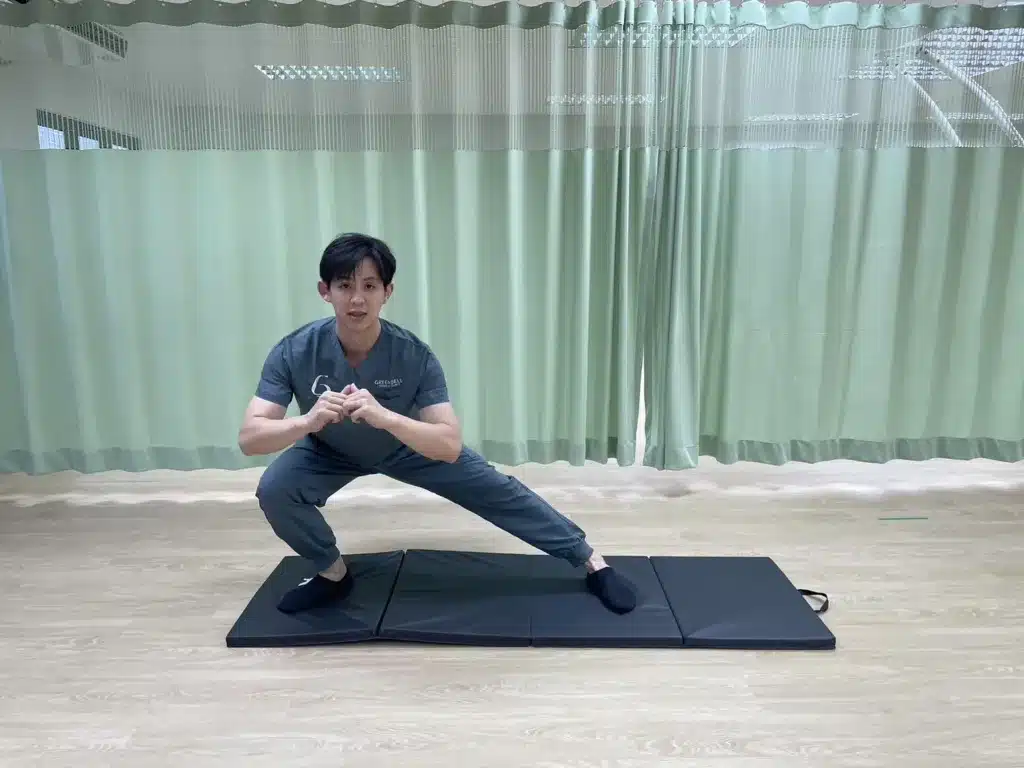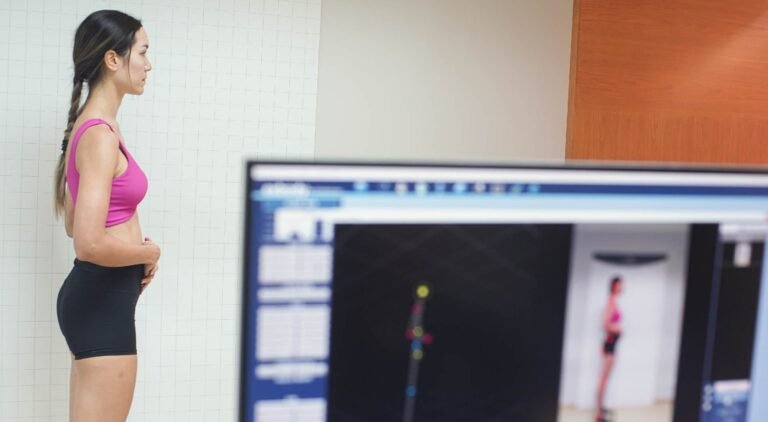Groin Pain
Groin pain is a common issue that affects many people, especially in active places like Thailand. It can come from sports injuries or doing too much. Knowing what causes it is key to getting better and moving freely again. By finding the right treatment, people can feel better and live better lives.

Key Takeaways
- Groin pain can significantly impact daily activities and sports performance.
- Understanding the causes of groin discomfort is essential for effective management.
- Various treatment options are available to aid in the recovery process.
- Addressing groin pain promptly can improve overall mobility.
- Preventative measures can help reduce the risk of future injury.

Understanding Groin Pain
Understanding groin pain is key for those who feel it. The groin pain definition means discomfort in the area between the abdomen and the upper thighs. It can feel sharp or be a general ache. Knowing the types of groin pain helps us understand its causes and treatments.
What is Groin Pain?
Groin pain can come from muscle strains, sports injuries, or other health issues. Some think it only affects athletes, which is a misconception. But, anyone can feel groin pain, no matter how active they are.
Common Misconceptions About Groin Pain
Many misunderstand groin pain. Some think it’s only from hard exercise, but that’s not true. Being overweight, pregnant, or having certain health issues can also cause groin pain.
| Misconception | Truth |
|---|---|
| Only athletes experience groin pain | Anyone can feel groin discomfort, not just athletes. |
| Groin pain always means a serious injury | It can be from minor strains or overuse and needs attention if it doesn’t go away. |
| Rest is the only way to fix groin pain | Stretching and rehab might also be needed for recovery. |
Common Causes of Groin Discomfort
Understanding what causes groin discomfort is key to fixing it. Groin strain often happens during sports. Muscle pulls and tears, along with other health issues, can cause ongoing pain.
Knowing what’s causing the pain is important for treatment.
Sports Injuries and Groin Strain
Sports injuries can lead to groin strain. This happens when muscles get overstretched or torn. Athletes in sports that need quick changes in direction, like soccer or basketball, are at higher risk.
This type of injury brings sharp pain to the groin and can slow down performance.
Muscle Pulls and Tears
Muscle pulls and tears come from quick movements that strain the groin muscles. These can happen during activities like sprinting or jumping. They cause swelling and bruising, so getting help quickly is important to avoid more harm.
Other Medical Conditions Affecting the Groin
There are also health issues that can cause groin pain. A sports hernia is one, causing pain due to muscle weakness. Other health problems, like pelvic pain, can also affect the groin, needing a full check-up to understand the symptoms well.

Symptoms Associated with Groin Pain
Knowing the symptoms of groin pain helps in figuring out what kind of discomfort you’re feeling. This pain can show up in places like the inner thigh or the pubic area. Spotting where the pain is can help you understand its type and how bad it is.
Recognizing Pain Locations
It’s key to know where the pain in your groin comes from. Common spots include:
- Inner thigh pain: This often means the adductor muscles are strained, making it hard to move.
- Pubic area pain: This could be from an injury to the muscles or ligaments around it.
- Radiating pain: Sometimes, pain spreads to areas like the hip or lower back, making it harder to figure out the cause.
Severity and Duration of Symptoms
The severity of groin pain can differ a lot from person to person. Some might just feel a bit of pain that doesn’t really get in the way, while others might have really bad adductor pain that makes it hard to move. How long you’ve had the pain is also important for figuring out why:
| Symptom Severity | Description | Potential Cause |
|---|---|---|
| Mild | Slight discomfort, easily manageable | Minor muscle strain or overuse |
| Moderate | A noticeable pain affecting daily tasks | Adductor strain or inflammation |
| Severe | Intense pain, difficulty walking or performing daily activities | Serious muscle tear or avulsion injury |
Getting a good handle on your symptoms helps you get the right medical help fast. Knowing about inner thigh pain and how bad it is can really help you get better faster.
How to Diagnose Groin Pain
Diagnosing groin pain takes a step-by-step approach. It starts with understanding the patient’s medical history and doing a physical check-up. This helps figure out the type and how bad the pain is.
Medical History and Physical Examination
The first step is to get all the details about the patient’s health history. Doctors will want to know when the pain started, any past injuries, and what activities might have made it worse. This info helps make a good diagnosis and plan for treatment.
Next, a physical check-up is done on the affected area. The doctor looks for tenderness, swelling, and how much movement is possible. This helps spot muscle strains, tears, or other issues that might be causing the pain.
Imaging Tests for Accurate Diagnosis
Sometimes, imaging tests are needed for a full check-up. X-rays and MRIs show the bones, soft tissues, and other parts in the groin area. These tests help check for fractures or tears, making the diagnosis more precise.
| Type of Imaging Test | Purpose | Advantages |
|---|---|---|
| X-ray | Identifies fractures or bone anomalies | Quick and widely available |
| MRI | Evaluates soft tissue injuries | Highly detailed images, non-invasive |
| Ultrasound | Assesses soft tissue structures | Real-time imaging, useful for dynamic evaluations |
Using different diagnosis methods makes diagnosing groin injuries more accurate. This leads to better treatment plans for each person’s needs.

Groin Pain vs. Hip and Groin Pain
It’s key to know the difference between groin and hip pain. These pains are close together but have different causes and treatments. Knowing the differences helps with the right diagnosis and treatment.
Understanding the Differences
Groin pain comes from muscles, tendons, or ligaments in the groin. It’s often from strains or sports injuries. Hip pain, on the other hand, comes from joint problems like arthritis or labral tears. A hip pain comparison shows they have different causes and treatments.
Implications for Treatment
Knowing the difference affects treatment. If you mix up groin and hip pain, you might not get the right treatment. For instance, working on joint mobility won’t help a muscle strain. So, it’s important to understand symptoms, where the pain is, and its history. This helps pick the best treatment, improving recovery chances.
Effective Treatment Options for Groin Injury
Dealing with a groin injury means using various treatments to help heal and ease pain. It’s key to know about rest, physical therapy, and managing pain to speed up recovery.
Rest and Recovery Methods
Rest is crucial for healing from a groin injury. Letting the area recover helps avoid more harm. Here are some tips:
- Take breaks from activities that make the pain worse.
- Use ice packs to lessen swelling and inflammation.
- Keep the injured area elevated to reduce stress while it heals.

Physical Therapy and Rehabilitation
Physical therapy is a big part of treating groin injuries. A therapist will create a plan just for you. This plan includes:
- Exercises to strengthen the groin area.
- Stretching to improve flexibility and movement.
- Manual therapy to ease tightness and boost blood flow.
With regular therapy, people often see better movement, less pain, and a faster recovery.
Physical Therapy and Rehabilitation
Physical therapy is a big part of treating groin injuries. A therapist will create a plan just for you. This plan includes:
- Exercises to strengthen the groin area.
- Stretching to improve flexibility and movement.
- Manual therapy to ease tightness and boost blood flow.
With regular therapy, people often see better movement, less pain, and a faster recovery.

Home Remedies for Groin Strain and Pain Relief
Using home remedies for groin strain can make you feel better and help you heal faster. Pain relief techniques at home can lessen symptoms and aid in healing. Here are some effective methods.
Cold and Heat Therapy
Cold and heat therapy can help manage groin pain. Cold reduces inflammation and numbs the area. Heat improves blood flow and relaxes muscles. Here’s how to use them:
- Cold packs: Wrap a cold pack in a towel and apply it for 15-20 minutes every hour in the first few days.
- Heating pads: After a few days, use a heating pad for 15-20 minutes to ease muscle tightness and stiffness.
Gentle Stretching Exercises
Gentle stretches can aid in recovery. They increase flexibility and improve blood flow in the groin. Here are some stretches to try:
- Seated Butterfly Stretch: Sit with your feet together, push your knees towards the ground.
- Hip Flexor Stretch: Kneel on one knee, push your hips forward while keeping your back straight.
- Figure Four Stretch: Lie on your back, cross one ankle over the other knee, pull the uncrossed leg towards your chest.
Using cold and heat therapy and gentle stretches at home can help with pain relief. By focusing on comfort and slow movements, you can effectively ease groin pain.
When to Seek Medical Attention for Groin Pain
Knowing when you need urgent care for groin pain is key. Some situations are serious and need quick action to prevent worse problems. It’s important to know when to see a doctor.
Red Flags to Watch Out For
- Severe or worsening pain: If the pain is very bad and doesn’t get better with rest or home remedies, you should get help fast.
- Inability to walk: Trouble moving or putting weight on your leg means you should see a doctor right away.
- Swelling or bruising: Big swelling or color changes in the groin area could mean a serious issue.
- Persistent discomfort: Pain that lasts a long time means you should get checked out by a doctor.
- Signs of infection: Fever, chills, or redness in the area mean you should see a doctor right away.
If you notice any of these signs, it’s important to act fast for your health. Getting help quickly can lead to better treatment and lower risks from groin injuries.

Preventative Measures for Groin Injury
It’s crucial to take steps to lower the risk of groin injuries, especially for athletes and those who are active. Starting with structured warm-ups can boost flexibility and get muscles ready for tough activities. Also, doing targeted strength training helps strengthen the core and muscles around it, making you more stable and supported.
Warm-Up and Stretching Techniques
Starting with the right warm-up before sports or exercise is key to avoiding injuries. Warm-ups get blood flowing to muscles and make them more flexible, cutting down on strains. Here are some warm-up exercises you should try:
- Dynamic stretches like leg swings and hip circles
- Light aerobic activities such as jogging or skipping
- Specific movements related to the sport or activity
These exercises get your body ready for what’s to come, easing tension and boosting movement.
Strength Training for Injury Prevention
Building strength through specific workouts helps prevent injuries and boosts performance. Exercises that focus on the core and groin muscles make you more stable. Here are some exercises to try:
- Squats to strengthen the lower body
- Bridges to engage the glutes and lower back
- Pilates or yoga for overall core strength and flexibility
Adding these injury prevention strategies to your routine can greatly lower the risk of groin injuries and improve your athletic performance. Sticking with a regular warm-up and strength training plan builds a strong, resilient body.
Conclusion
Understanding groin pain is key for those who feel it. Knowing the causes and symptoms helps you find the right treatment. This knowledge lets you know when to get medical help, improving your health.
Preventive steps, rehabilitation, and the right care can help you move better. You can try physical therapy or home remedies to ease the pain and heal.
Being informed and talking with doctors is crucial. Take care of your health and be proactive. This way, you can handle groin pain well and improve your life quality.





